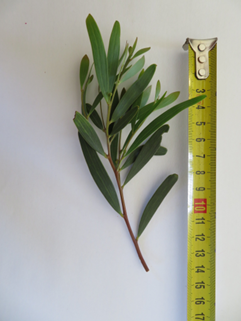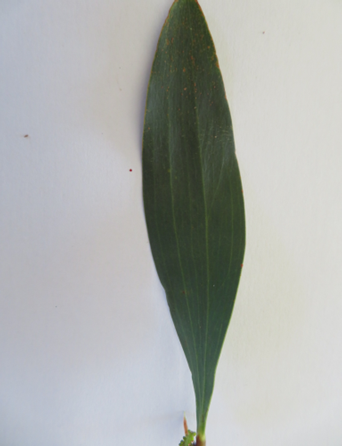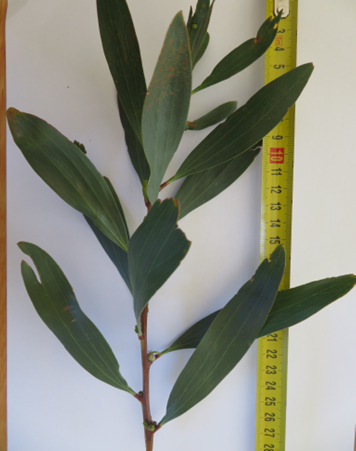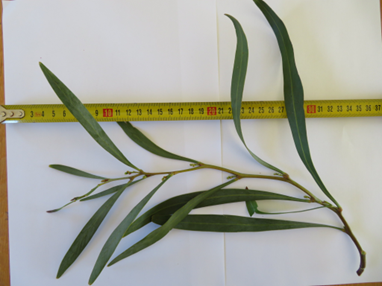How to distinguish between Port Jackson Willow, Long-leaved Wattle and Rooikrans plants.
- Mervyn Brouard
- Jun 19, 2024
- 2 min read
Port Jackson Willow, Long-leaved Wattle and Rooikrans don't have true leaves but instead have modified leaf stems known as Phyllodes. For simplicity, in this article, we will commonly call them "leaves".
Identifying each plant is crucial as they require different treatments from the perspective of alien invasive plant management. The "leaves" of Rooikrans, Long-leaved Wattle, and Port Jackson Willow are displayed above, from the bottom upwards. While size differences are apparent when comparing them, these trees can be misidentified when viewed in isolation. The close-up photos showcase the distinct vein configurations that help accurately identify each species.
The Rooikrans
The Rooikrans is characterised by three prominent veins originating from its base. It may be superficially confused with the Wild Olive due to the size and colour of its leaves, but the multiple veins from the base are distinctive. The bark of the Rooikrans is rough and grey. Its wood is hard and commonly used as braai wood. To effectively eradicate this plant, it should be cut very low to the ground, below any side stems.
The Long-leaved Wattle
The long-leaved wattle features two prominent veins originating from the base of its leaf, although there are additional, less visible veins. This shallow-rooted plant allows small specimens to be easily pulled out, particularly in soft soils. One removal method is cutting the plant approximately 30 cm from the base and stripping the bark down to the soil, which is easily done on smaller plants. Another method involves cutting the plant low, below any side shoots, and promptly applying the herbicide Kaput to the cambium within three minutes of cutting. The cambium is the active outer layer of the tree stem, responsible for the downward flow of nutrients and the upward flow of water.

Cambium diagram
The Port Jackson Willow
The Port Jackson Willow is identifiable by its single mid-vein and feather-like side veins. Its large size, messy look, and curved, wavy leaves are noticeable even from afar. Eradicating this willow is challenging due to its long taproot, which makes removal tough. If the stem is cut or burned off near the ground, new shoots will emerge from the bulbous part of the taproot. Resprouting, or coppicing, often accelerates the tree's regrowth. For smaller seedlings and saplings, it may be possible to extract the taproot using a spade or tree popper. Removing the bulbous taproot completely is crucial to ensure the tree's death. If herbicide is used, the plant should be cut low, and Kaput should be applied to the cambium within three minutes of cutting. After extraction, compact the soil to avoid exposing any Port Jackson willow seeds.
Written and Authorised by
Mervyn Brouard
WESSA Algoa Bay Branch - Alien clearing sub-committee
14th June 2024
To learn more about stopping alien plants from spreading in the Eastern Cape, contact Mervyn at 082 875 4210.
If you are interested in helping Mervyn clear alien plans, please contact him to learn when the next clearing event is scheduled.
















Comments